The Ergonomics of Automation
Automated systems minimize or eliminate ergonomic stressors, for safer, more sustainable operations
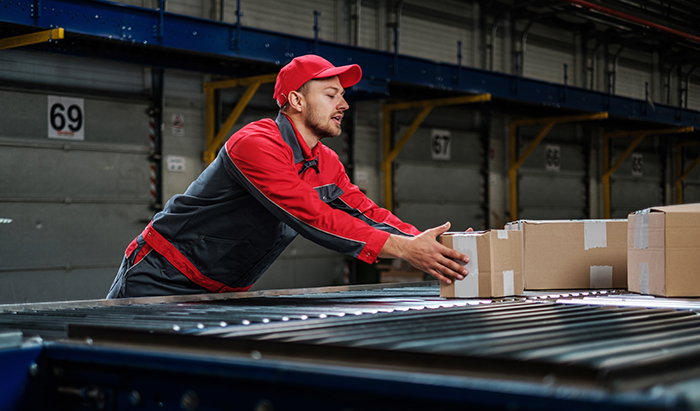
Above: distribution center worker stretches over a conveyor line to access a package. Automation can reduce or eliminate this type of stressful, repetitive motion.
Companies tend to focus on the hard-dollar ROI when they evaluate automation—labor reduction, throughput improvements, error reduction and efficiency—but should also consider “soft” benefits like ergonomics, safety and flexibility. Ergonomics in particular should be considered a primary factor in an era of aging labor and tight supply.
Labor flexibility, ergonomics and automation
Extend the career of aging workers
Ergonomics has always made sense for industrial operations but has become more important over the last few years due to aging workforces. The National Association of Manufacturers forecasts a shortage of over 2 million workers by 2030, and that could be enthusiastic. Much of that shortfall is related to skilled, aging workers retiring faster than they can be replaced. If their jobs require the kind of repetitive movements that impact their backs, shoulders and arms, they’ll retire faster.
Aging workers may want to work longer, but their bodies simply can’t handle the physical rigors of the work. Automation can help extend their careers
Since warehouse and distribution work often requires twisting, reaching, bending and other damaging repetitive motions, shifting the impact to automated systems makes more sense than ever. In an era of aging workers and continued shortages, the impact of adding ergonomic processes can’t be understated.
Above: AGV automation removes people from the hard job of manual pallet handling, which can have profound ergonomic consequences. The idea is to identify the areas where people are most vulnerable to repetitive motion and muscle/skeletal issues, and target those with automated systems that reduce exposure.
“Whether a linebacker or ballerina”
Flexibility is critical in tight labor markets because it lets you hire anyone from a 200-pound athlete to a middle-aged person with a bad shoulder to do the same work. Automated systems like cobots that interact with, work alongside and augment people are ideal ways to automate the kind of tasks that can cause musculoskeletal damage or require a higher level of strength and fitness. Focusing on ergonomics broadens the number of people who can do the work, allowing you a bigger, more diverse pool of labor.
Missed days, reduced service and ergonomics
When it comes to absenteeism, musculoskeletal injuries “punch above their weight class” by producing more missed days than other types of ailments and injuries. Since ergonomics related injuries affect 5% of the warehouse workforce every year and produces an absentee rate of 2.8% per incident, the impact is significant. As the labor pool continues to contract, shaving absentee rates due to ergonomics-related injuries may justify many automation projects on their own.
Automation type |
Ergonomic impacts and improvements |
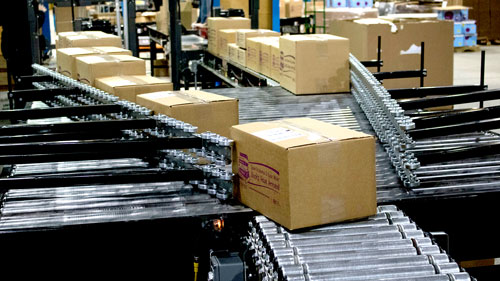 |
Conveyor systemsConveyors are ergonomic devices because they reduce manual handling and transport, where many ergonomic strains and stresses can occur. Well-designed conveyor applications are ergonomic for that reason alone, but can also reduce other manual tasks like sorting, merging and rotation that can cause musculoskeletal issues for workers who might otherwise do these tasks manually. |
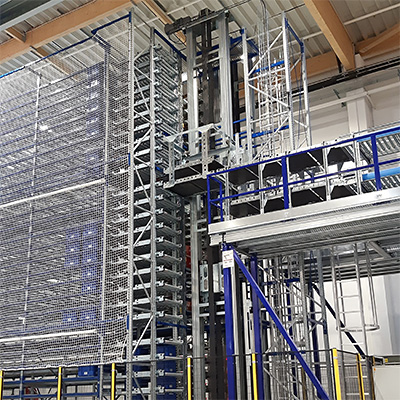 |
AS/RS systems and carouselsGoods-to-person picking technologies like VLMs and AS/RS boost ergonomics because they deliver products to pickers at the right place, in the right position, at the right time. These systems tend to either reduce the role of order pickers, or to significantly simplify it. For instance, they can position the products at the ergonomic “golden zone” at fingertip height, reducing uncomfortable bending and lifting. Because they’re goods to person in nature, they significantly reduce walking and transit. |
 |
AGVs and driverless forkliftsBecause they reduce manual handling of heavy unit loads like pallets, crates and heavy containers, AGVs and other goods-to-person vehicles improve ergonomics related to transport and handling. First, they reduce walking and transit by warehouse workers. Secondly, they reduce the amount of weight lifted and goods manipulated by hand. Finally, they are effective at reducing repetitive motions associated with moving these kinds of loads because they can deliver products to the right place, in the right position. They also help separate people from industrial traffic. |

|
RoboticsRobotics were more or less designed to reduce repetitive motions by replicating and replacing them. Particularly on difficult and heavy work like end-of-line palletizing, robots can effectively replace people in the most difficult and strenuous parts of an operation. They can also be used for packing, picking, assembly and welding. |
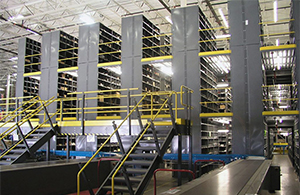 |
Pick modulesPick module systems with takeaway lines can support most pick module designs, and are ideal for picking operations because they consolidate products into tighter spaces where pickers travel less, and are generally delivered product to better ergonomic positions, either for case picks (pallets are delivered to consistent spaces) or each picks (in carton flow where inventory slotting can position the most frequent items to the most accessible positions). |
Automation improves safety and work culture
Above: Robotic cobot palletizer system removes people from difficult tasks like palletizing cartons at the end of a conveyor line at a fraction of the cost of fully automated robotic palletizers. These systems are faster to implement and more attainable for more kinds of operations than full-blown palletizing automation.
Companies with automated systems that remove people from dangerous and difficult situations have a more positive culture and workplace environment.
They can recruit, train and sustain a better workforce. Replacing two people doing backbreaking work at the end of a conveyor line with a palletizing robot or cobot system not only reduces ergonomics issues at the point of use, it improves safety culture across the operation. Automated systems can help reduce fatigue, which also reduces injuries because people are more aware, sharper and fresher.
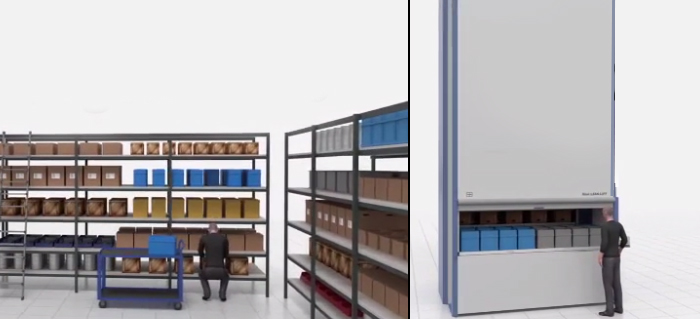
Above: goods-to-person technology like carousels reduce the storage footprint and deliver goods to pickers at a optimal ergonomic positions, resulting in less walking and transit as well as reducing or even eliminating bending, stretching and other difficult repetitive movements. Video: Carousel Advantages
Actions speak louder than words
Actions matter more than words, particularly in tough, physical work. Automation helps set the tone for companies who want to nurture a better work culture. Automation lets you reduce the least valuable, most dangerous activities and move those individuals to better and more productive tasks.
What areas should an ergonomics-focused automation project target?
- Systematic and constant repetitive motions. If a worker extends her arm over a conveyor line every 30 seconds to access a package or tote, the ergonomic impact over days, months and years can be profound. Can that motion be automated? Could automation make that motion, or reduce its impact on the order picker?
- Heavy lifting and carrying are areas where automation from conveyor systems to AGVs that deliver goods to workers can reduce the impact of this muscle-straining work. Can you remove people from the process of handling pallets and other heavy loads, where injuries and muscular stress are likely? See: Ergonomics and Pallet Handling for more information.
- Reduction of static positions are specifically suited to automation. If someone is standing and constantly required to raise their hands overhead, for instance, fatigue and stress is inevitable—and avoidable with certain goods-to-person methodology.
- Removing people from situations that conducive to musculoskeletal issues: Automation can help remove people from situations where ergonomic stressors are common, such as tight spaces, lifting functions and picking from awkward areas. It can also remove people from areas of contact stress, where sharp or hard edges can cause injuries. Temperatures and exposure to moisture or chemicals are also possible to address with various types of automated systems. Can you remove people from hazardous and dangerous environments with automation? What areas of your plant would you prefer no one to have to regularly work in or enter?
Automation is an essential industrial ergonomics tool
Because automated systems reduce or eliminate the kinds of systematic stress points that result in ergonomic issues, they help reduce injuries, create a better work culture and contribute to the long term health and wellbeing of our contracting labor pool. There is no magic bullet, but we can help you explore various options from fully automated systems to points of automation that target the most difficult, least productive areas for incremental improvements.
Read more
- Improve Productivity with Ergonomic Storage System Design
- A Guide to Workstation Reach Zones
- Ergonomic Safety Tips for the Warehouse
Tags: ergonomics
Scott Stone is Cisco-Eagle's Vice President of Marketing with 35 years of experience in material handling, warehousing and industrial operations. His work is published in multiple industry journals an websites on a variety of warehousing topics. He writes about automation, warehousing, safety, manufacturing and other areas of concern for industrial operations and those who operate them.



